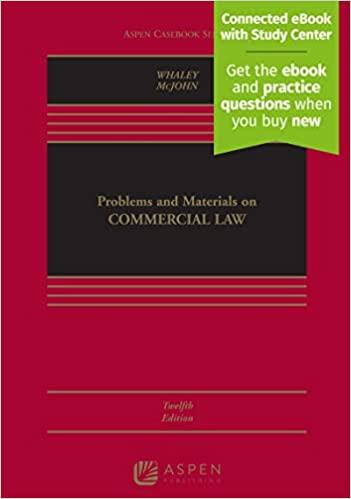Question
I need correct answers only. Business law case study, the case describes the eight-year-long battle between the world's largest semiconductor company, Intel Corporation (Intel) and
I need correct answers only.
Business law case study, the case describes the eight-year-long battle between the world's largest semiconductor company, Intel Corporation (Intel) and the European Union (EU). In 2009, the European Commission (EC) had imposed a 1.06 billion fine on Intel for violating the antitrust policies of the EU. The EC alleged that Intel had abused its monopoly in the computer microprocessors market by coercing manufacturers to purchase all their chips from Intel instead of rivals such as Advanced Micro Devices (AMD). After the EC handed down the fine on Intel, in 2014, the chipmaker appealed to the General Court stating that the fine was huge. However, in June 2014, the General Court upheld the 1.06 billion fine against Intel stating that the penalty was proportionate to Intel's anticompetitive practices. In August 2014, Intel appealed to the Court of Justice of the European Union (CJEU), the EU's top court, to overturn the General Court's decision. In September 2017, the CJEU ruled that the General Court could re-examine the fine against the company. The CJEU in its ruling decided in the case of Intel, the 'As-Efficient-Competitor' (AEC) test should be properly evaluated by the General Court. The General Court had to look into Intel's legal arguments more closely, giving a chance to Intel to have the antitrust fine reduced or annulled.
Question 116 What is the recommended upper limit dose of lamotrigine when combined with both carbamazepine and valproate? Question 117 Is a valproate-lamotrigine combination more effective than carbamazepine on its own against partial seizures? Question 118 Why is the incidence of parkinsonism less common in smokers? Question 119 Is it recommended to start the treatment of parkinsonism with dopamine agonists alone in elderly (over 60 years old) patients, and to delay using L-dopa until the disease has progressed much further? Is there a rationale for this protocol in younger patients? Question 120 Does amantadine increase the endogenous release of dopamine, thus aiding early treatment of parkinsonism? Question 121 A 25-year-old woman, pregnant in her second trimester, starts to experience chorea and bilateral ankle arthralgia but has no past history of rheumatic chorea. In the first hour, her erythrocyte sedimentation rate is 70. Could this be no more than chorea gravidarum? Question 122 Is valproate as equally effective as haloperidol in the treatment of chorea, in particular rheumatic chorea? 21 Neurological disease 234 Question 123 Does a lesion of Guillain-Mollaret's triangle in the brain stem cause a type of myoclonus other than symptomatic palatal myoclonus? Question 124 1. In West's syndrome, after the fits have been suppressed, for how long should treatment with adrenocorticotrophic hormone (ACTH) continue? 2. Does complete suppression of resistant infantile myoclonic jerks by ACTH characterize West's syndrome? Question 125 Are anticholinergics the first line of treatment for primary torsion dystonia? Question 126 Can multiple sclerosis (MS) be associated with lack of vitamin D, lack of sunlight or low fish/cod-liver oil in the diet? By looking at the epidemiology (none at the equator; more outside 40 latitude, both north and south; less on top of Swiss mountains than in the Swiss valleys; more in fishing coastal towns and in Eskimos) this seems to be very important. Vitamin D modulates the immune system and active vitamin D given to rats with experimental MS (acute encephalomyelitis) lowers the monocyte count in cerebrospinal fluid (CSF) by 90% in 72 hours with return of power to their limbs. Japanese MS patients who ate plenty of fish were found to have vitamin-D-receptor pleomorphism. The staple grains and cereals (wheat, barley, oats) eaten in Scandinavian and northern European countries contain phytic acid, which blocks vitamin D absorption, and rice is the only cereal free of phytic acid. Are there any studies where low vitamin D levels in blood are associated with MS relapse?
Step by Step Solution
There are 3 Steps involved in it
Step: 1

Get Instant Access to Expert-Tailored Solutions
See step-by-step solutions with expert insights and AI powered tools for academic success
Step: 2

Step: 3

Ace Your Homework with AI
Get the answers you need in no time with our AI-driven, step-by-step assistance
Get Started


